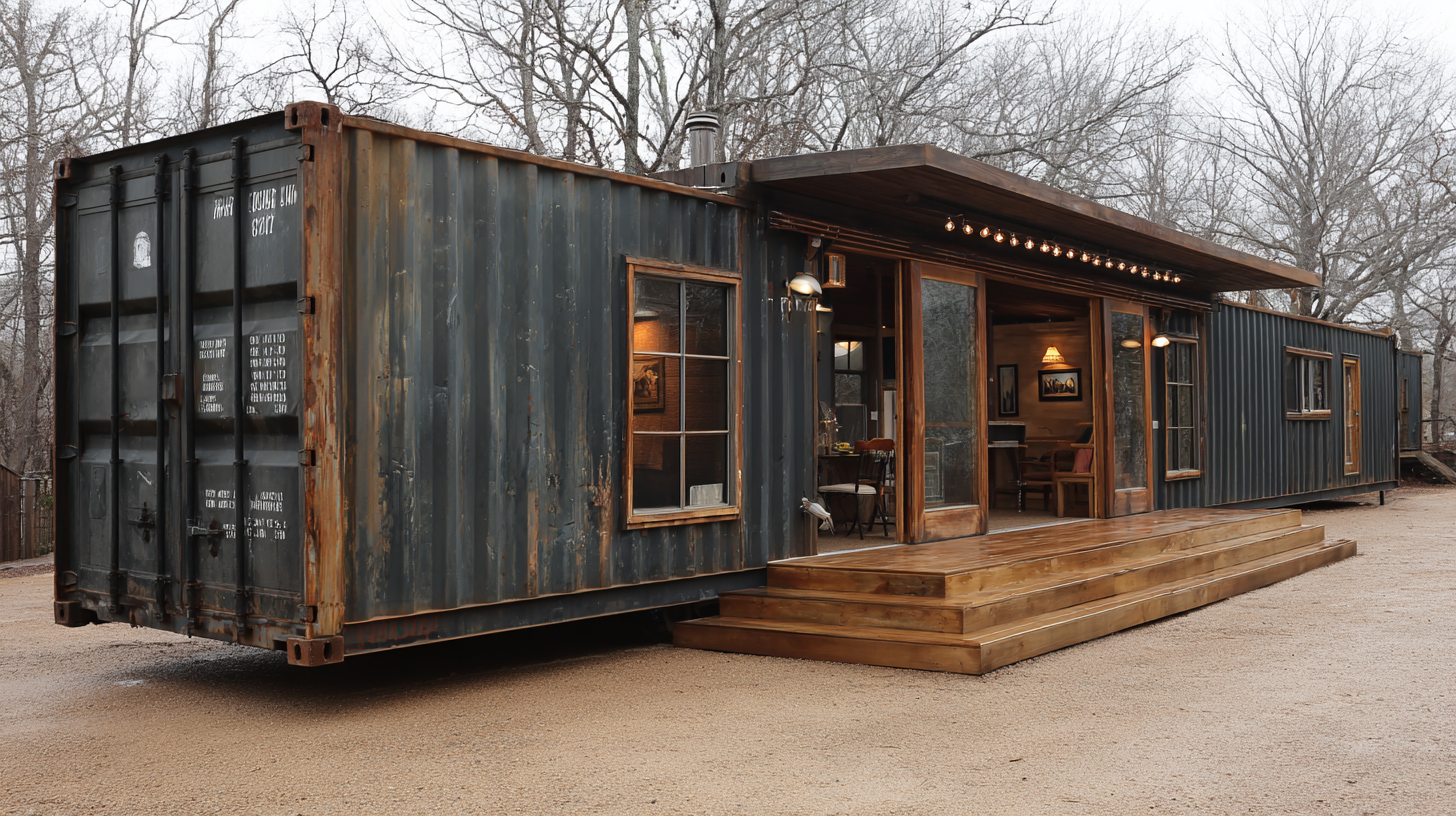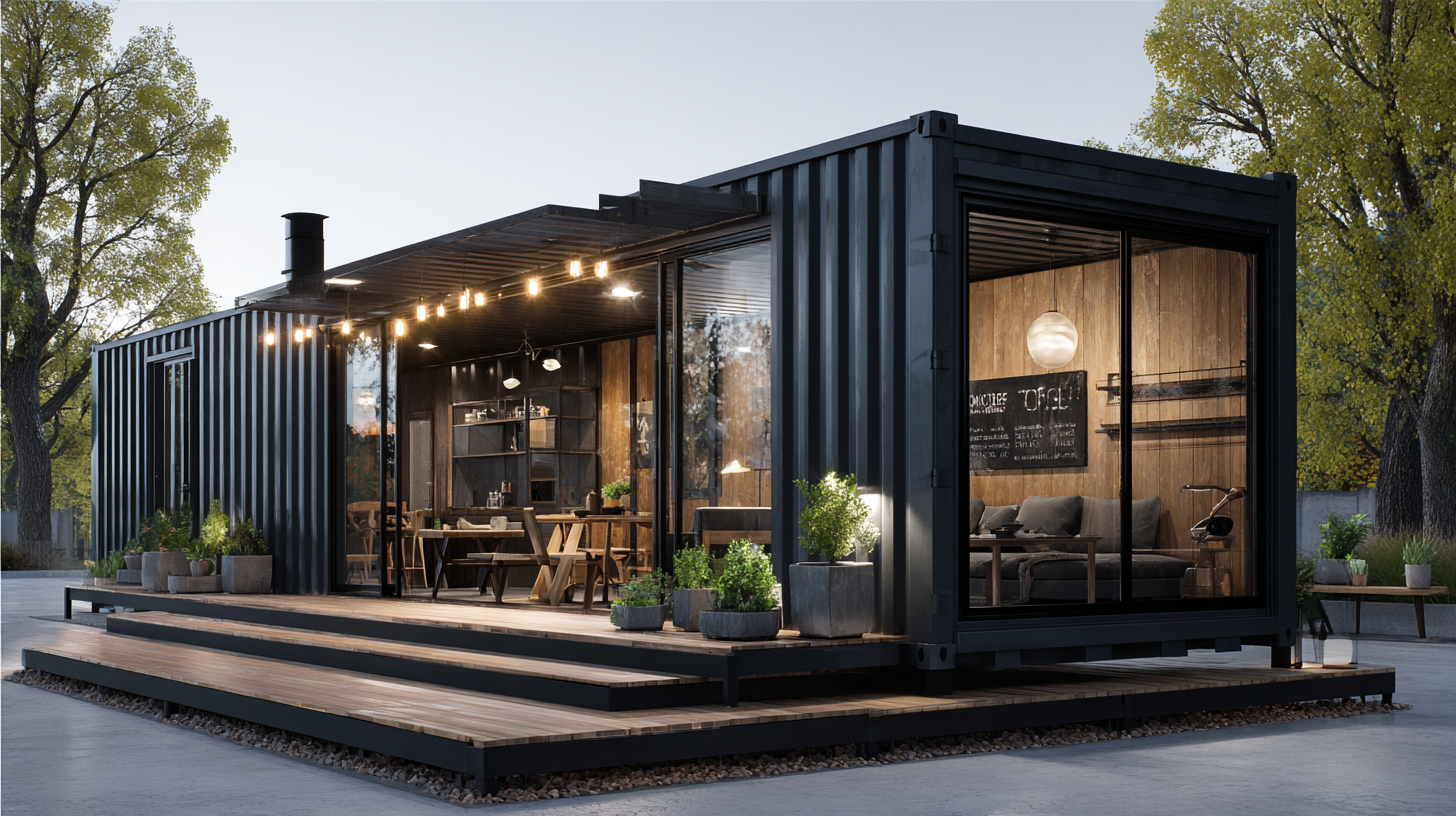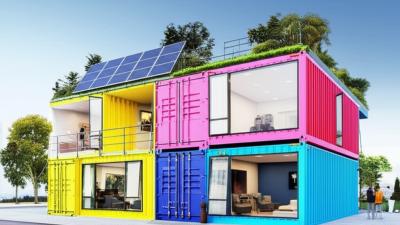News & Blogs
How to Transform a 40 Foot Shipping Container into Your Dream Home
In recent years, the trend of converting a 40 foot shipping container into a functional living space has gained significant traction, driven by the rising desire for sustainable and affordable housing solutions. According to the Container Housing Alliance, the global shipping container home market is projected to reach $73.1 billion by 2026, highlighting the increasing popularity of this innovative approach to home building. With an estimated cost savings of 30-50% compared to traditional construction methods, repurposing a 40 foot shipping container not only provides financial benefits but also contributes to environmental sustainability by reusing materials. Furthermore, the versatility of these containers allows for creative designs that can be tailored to individual lifestyles, making them an attractive option for homeowners looking for unique, compact living spaces. As we explore the transformation process, we will offer essential tips and insights to help you realize your dream container home.

10 Essential Steps to Transform a 40-Foot Shipping Container into Your Dream Home
Transforming a 40-foot shipping container into a dream home is an innovative solution gaining popularity in the housing industry. According to a report from the Container Housing Industry Association, the use of shipping containers as living spaces has seen a growth rate of approximately 20% annually over the past five years. The appeal lies in their affordability and durability; the average cost to convert a container can range from $10,000 to $35,000, significantly less than traditional homes.
To embark on this transformation, the first essential step involves obtaining necessary permits and adhering to local building codes, which is crucial for legal compliance. Next, insulation is a key consideration. The American Institute of Architects emphasizes the importance of proper insulation, highlighting that metal containers can lead to extreme temperature fluctuations without adequate treatment. Following insulation, structurally reinforcing the container to accommodate windows and doors becomes vital. These foundational steps lay the groundwork for creating a comfortable, functional living space tailored to individual tastes and needs. By following these essential steps, homeowners can effectively turn a simple shipping container into a personalized sanctuary.
Transforming a Shipping Container into Your Dream Home: Key Steps
5 Key Design Tips for Maximizing Space in Your Container Home
Transforming a 40-foot shipping container into your dream home requires clever design strategies to maximize the limited space. With the global market for mobile container homes projected to grow from $1.6 billion in 2025 to $3.06 billion by 2034, the trend of alternative housing solutions is gaining significant momentum. To make the most of this unique living environment, consider these key design tips.
Firstly, an open floor plan is essential for creating an illusion of spaciousness. Utilizing multi-functional furniture, such as a sofa that converts into a bed or a dining table that folds away, can drastically improve the usability of limited space. Additionally, vertical storage solutions, like shelving units that reach the ceiling, can help free up floor area while keeping belongings organized and accessible.
Secondly, incorporating ample natural light through strategically placed windows can enhance the overall atmosphere of the container home. This not only makes the space feel larger but also creates a connection with the outdoors. By implementing these design principles, homeowners can effectively transform a shipping container into a comfortable and stylish abode that meets their unique lifestyle needs.
How to Transform a 40 Foot Shipping Container into Your Dream Home - 5 Key Design Tips for Maximizing Space in Your Container Home
| Design Element | Description | Space Saving Tips |
|---|---|---|
| Open Floor Plan | Eliminate unnecessary walls to create a more spacious feel. | Use furniture that can be easily moved or folded. |
| Multi-Functional Furniture | Incorporate pieces that serve multiple purposes. | Consider a sofa bed or an ottoman that doubles as storage. |
| Vertical Storage | Utilize wall space for shelves and cabinets. | Install shelving units that reach up to the ceiling. |
| Natural Light | Maximize window space for brighter living areas. | Choose sheer curtains to allow light while maintaining privacy. |
| Outdoor Integration | Create seamless transitions between indoor and outdoor spaces. | Use sliding glass doors to open up living areas to patios. |
8 Must-Have Features for a Functional and Cozy Shipping Container Home
Transforming a 40-foot shipping container into a cozy home is an exciting challenge that offers a unique blend of sustainability and style. To ensure your new abode is both functional and inviting, consider incorporating these 8 must-have features.
First and foremost, good insulation is critical. Proper insulation helps maintain a comfortable temperature year-round, which is essential in both summer and winter. This can be achieved through spray foam or rigid foam boards, depending on your climate needs.
Another vital aspect is maximizing natural light.  Installing large windows and skylights not only brightens up the interior but also connects you with the outdoors, making the space feel more expansive. Additionally, a well-planned layout enhances flow and function. Create designated areas for living, cooking, and sleeping to make the most of your limited space, incorporating multifunctional furniture where possible.
Installing large windows and skylights not only brightens up the interior but also connects you with the outdoors, making the space feel more expansive. Additionally, a well-planned layout enhances flow and function. Create designated areas for living, cooking, and sleeping to make the most of your limited space, incorporating multifunctional furniture where possible.
When it comes to aesthetics, personal touches can make your container feel like home. Use warm colors, natural materials, and cozy textiles to create an inviting environment. Incorporating greenery through indoor plants can also significantly enhance the ambiance and air quality. Choose features that resonate with your style to turn your container into a place you cherish.
7 Smart Ways to Insulate Your Shipping Container for Year-Round Comfort
When converting a 40-foot shipping container into a dream home, proper insulation is essential for maintaining comfort throughout the year. One effective method is using
spray foam insulation, which provides an excellent air seal and high R-value, minimizing energy loss. This approach not only keeps the interior warm in winter but also cool during hot summer months, making it a popular choice for container homes.
Another smart way to insulate your shipping container is by utilizing
rigid foam boards. These boards can be installed on the interior walls and ceiling, creating a barrier against temperature fluctuations. Additionally, incorporating
reflective insulation in areas like the roof helps to deflect heat from the sun, further enhancing energy efficiency. Pairing these insulation methods with proper ventilation can improve air quality and humidity control,
ensuring your container home remains a comfortable sanctuary all year long.
6 Budget-Friendly Strategies for Finishing Your Shipping Container Home
Transforming a 40-foot shipping container into a cozy home is an increasingly popular option for those looking to minimize costs while turning their living dreams into reality. With an average cost of around $4,000 to $7,000 for a used shipping container, it provides an affordable starting point compared to conventional housing. However, investing wisely in finishing your container home is crucial for maximizing both comfort and functionality. Here, we explore six budget-friendly strategies that can transform your container into a dream space without blowing your budget.

First, consider innovative insulation methods. Data from the U.S. Department of Energy suggests that poor insulation can lead to a 30% increase in energy costs. Using materials like reflective radiant barriers or spray foam can provide excellent thermal protection without extensive investment. Secondly, focus on repurposed materials for flooring and cabinetry, which are not only cost-effective but also environmentally friendly. According to a report from the Sustainable Furnishings Council, repurposing materials can reduce costs by up to 50% compared to new items. Lastly, leveraging DIY projects allows for personalization while keeping expenses low; research indicates that homeowners who tackle DIY projects can save an average of 25% on labor costs. These strategic choices enable prospective container homeowners to create a stylish, sustainable living space without compromising their budget.
Related Posts
-

Maximizing Space with the Best 20 Storage Container Solutions for Every Home
-

The Science Behind Refrigerated Containers and Their Role in Modern Logistics
-

Maximize Your Space with 20 Foot Storage Containers for Effective Organization Solutions
-

Innovative Uses of Sea Containers in Modern Sustainable Architecture
-

The Ultimate Guide to Efficient Storage for Shipping Containers and Optimization Tips
-

Mastering the Process: A Comprehensive Guide to Shipping a Container Efficiently
 عربي
عربي عربي
عربي